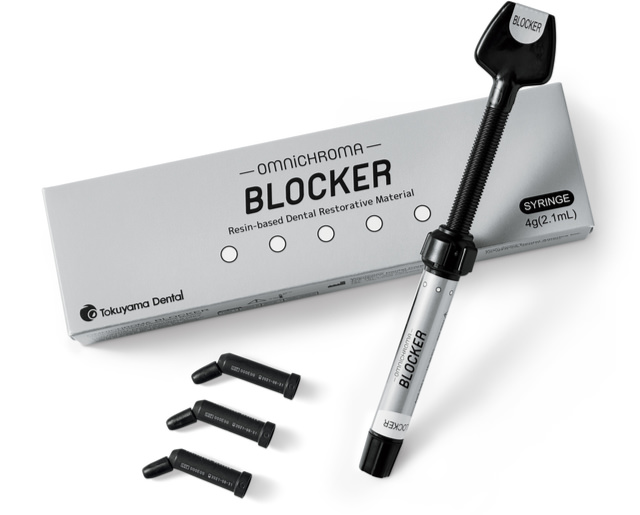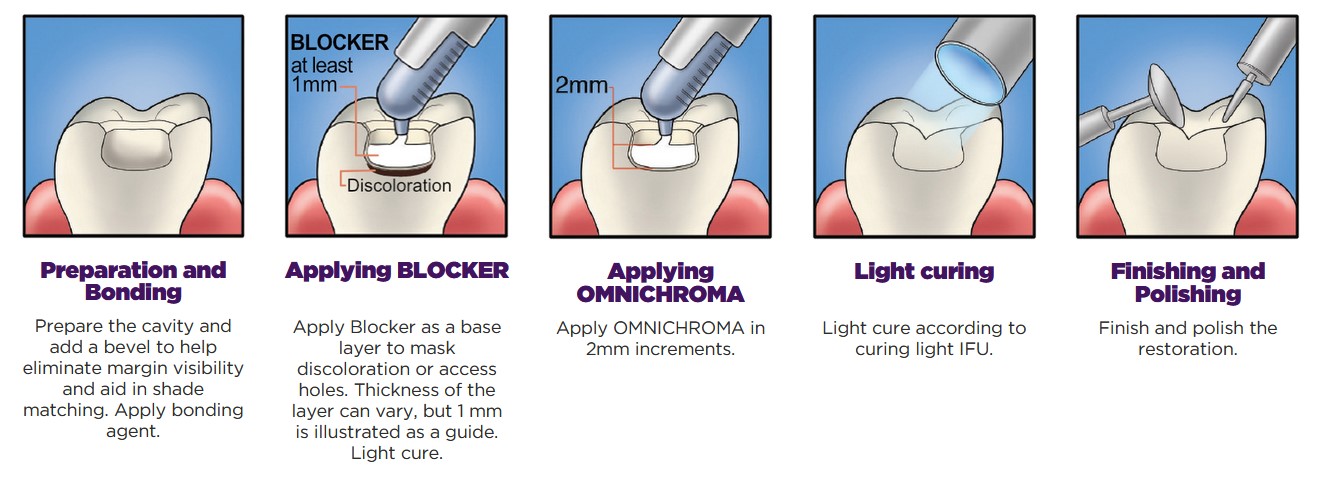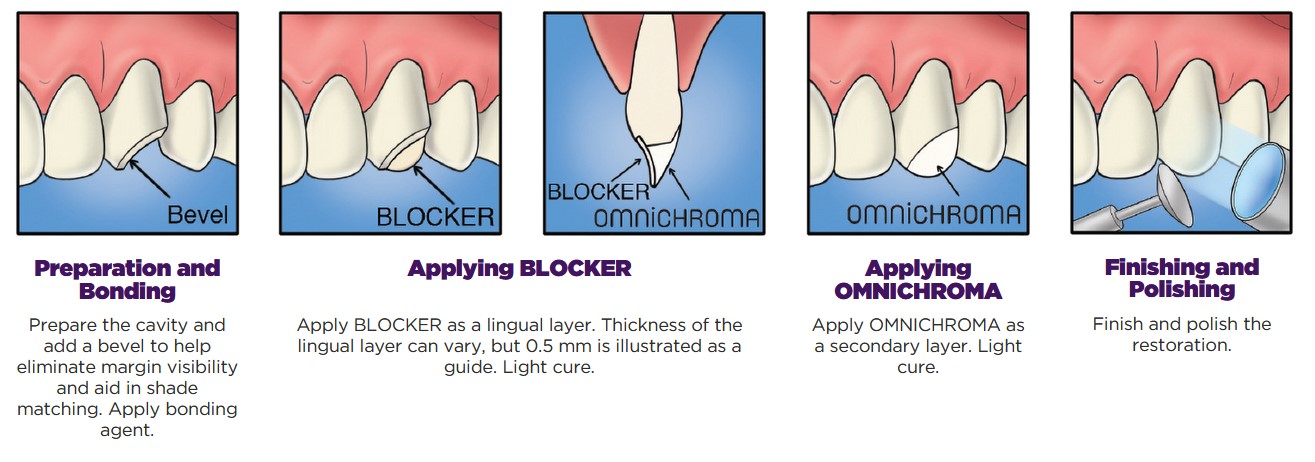All universal bonding agents are compatible with OMNICHROMA and BLOCKER

OMNICHROMA BLOCKER is indicated for:
- Preventing shade-matching interference in large Class III and Class IV restorations
- Masking amalgam staining
- Masking dark dentition and dentin
- Reconstructing a highly opaque tooth
OMNICHROMA BLOCKER is a supplementary product to OMNICHROMA. In large Class III and IV cases, OMNICHROMA may experience shade-matching interference due to a lack of surrounding tooth structure and/or dentition. OMNICHROMA BLOCKER is a supplementary material that can be used in conjunction with OMNICHROMA as a lingual layer to prevent shade-matching interference in these cases. OMNICHROMA BLOCKER can also be used to mask staining, or to reconstruct a highly opaque tooth.
The light penetrates OMNICHROMA but stops at the lingual wall of BLOCKER, which provides a surface for OMNICHROMA to shade-match to.

Note the OMNICHROMA attempting to shade match with the shadows of the mouth. This is due to OMNICHROMA not being bonded to a surface. The fillers cannot reflect the shade-match back to our eyes.


PROCEDURE VIDEO
POSTERIOR BLOCKER PROCEDURE GUIDE
Use BLOCKER before filling with OMNICHROMA for masking discolored teeth or metals. OMNICHROMA will assimilate to the color of BLOCKER, or the color of the masking material used.
Procedure Tip: BLOCKER is great for access holes

ANTERIOR BLOCKER PROCEDURE GUIDE
Use BLOCKER before filling with OMNICHROMA for direct restoration of extensive Class III and IV cavities with limited or no tooth structure. This prevents the restoration from appearing dark due to visible light transmission from the labial to the lingual.
Procedure Tip: BLOCKER is great for access holes

Frequently Asked BLOCKER Questions
- What kind of bonding agent is compatible with OMNICHROMA and BLOCKER?
All universal bonding agents are compatible with OMNICHROMA and BLOCKER . We recommend our universal bonding agent, Tokuyama Universal Bond. To learn more about this self-cured adhesive, - What kind of etching protocol is required?
OMNICHROMA is compatible with all standard restoration process materials. Please be sure to follow all material IFUs for best results. - What is the shelf life? Storage procedure?
OMNICHROMA and OMNICHROMA BLOCKER have a 3 year shelf life from the manufactured date. To store OMNICHROMA and OMNICHROMA BLOCKER, store in a cool and well-ventilated place. Store at temperatures between 0°C/25°F and 32°C/77°F. Keep away from heat, hot surfaces, sparks, open flames and other ignition sources. No smoking. Avoid exposure to high temperatures or direct sunlight. - What shade is BLOCKER? Won’t OMNICHROMA shade-match to this?
BLOCKER is most favorable with an A1-A3 range. If the tooth that OMNICHROMA will be bonded to is extremely dark or extremely light, an additional opaquer, tint(s), or shaded composite material can be applied to reflect the most natural looking restoration. - Is OMNICHROMA/BLOCKER radiopaque?
Yes.
